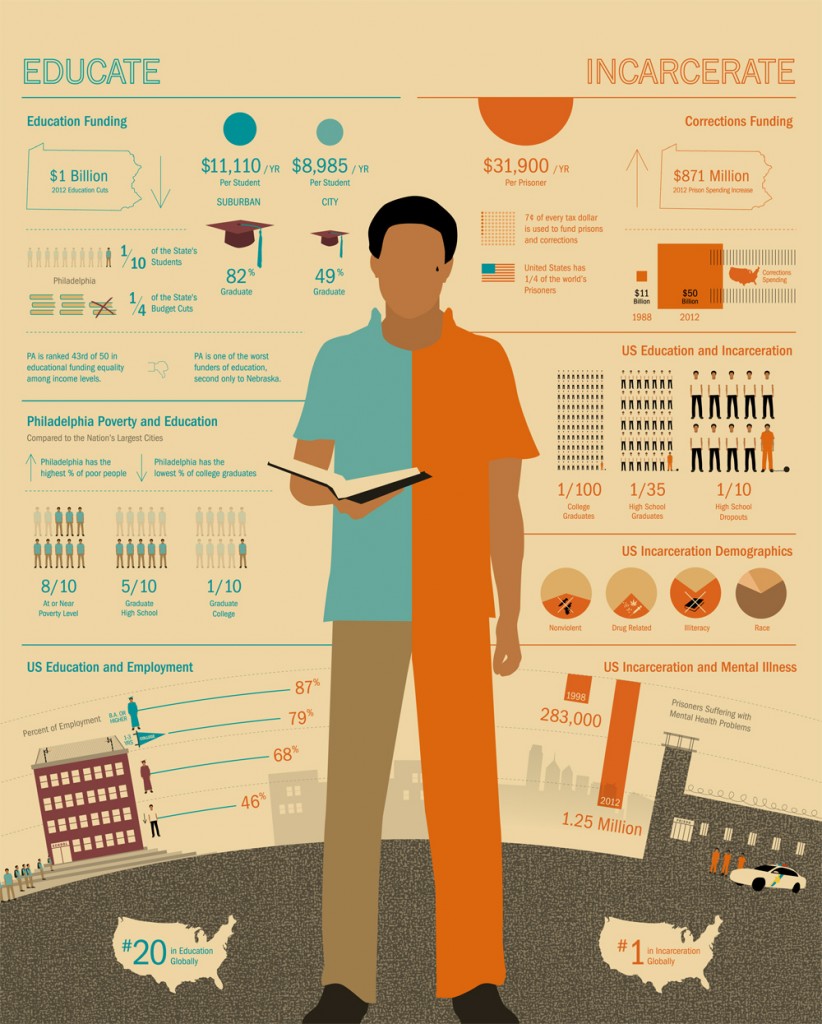Incorporating practitioner-oriented articles is essential to a thorough analysis because they introduce literature that targets those who are professionals in the field or are at least very familiar with the current issues that dominate and often pose alternative solutions to these problems. For the issues revolving around the school-to-prison pipeline and criminalization of youth, two practitioner-oriented articles were explored including “Thoughts on Breaking the School-to-Prison Cycle” by Matthew Lynch 29 and “Doing Time in High School: The Need for Tiered Disciplinary Systems” by Ilana Garon. 28

43
Both of these articles reference zero tolerance policies as a defining contribution to the school-to-prison pipeline and conclude that this system of punishment is clearly not an effective way to administer consequences. In Lynch’s article, rather than immediately condemning every aspect of the current disciplinary system as many critics do, he instead explains that he previously emphasized the need for “more strict and structured discipline in schools.” 29 While he claims that he still supports this statement, he clarifies that this is in no way supporting zero tolerance policies and reiterates this by blatantly stating his opposition to the effects of zero tolerance policies on individuals. Rather, he thinks that discipline in school is essential to its ability to function, but implementing a tiered system of discipline would be most effective. 29 Garon additionally believes in the high negativity that emerges as a result of zero tolerance policies and particularly targets the idea of removal, whether it be suspension, expulsion, or involvement of the criminal justice system, as an irrational yet commonly implemented tactic to eliminate challenging students. 28
44
While both articles emphasize their dissatisfaction with the zero tolerance policies, Lynch emphasizes the racial inequality that is reinforced as a result; he references the unequal administration of punishment and cites that “70% of all in-school arrests are black or Latino students.” 29 He highlights the environmental impact on an individual’s success and discusses how it is exceedingly important to account for the personal struggles of an individual and how that may impact their ability to excel in school. These challenges include poverty, low income, abuse, etc., and he explains that removal policies ignore these personal challenges because it is the easiest system for the administrators and requires a very minimal amount of effort. 29 Garon similarly references the lack of a well-developed system of discipline; she introduces the idea of a tiered system as a possible solution because this would be a way in which different disciplinary action could be taken depending on the individual circumstances and would include options in between those as minimal as simply calling a parent as well as those far less severe than outright removal from the education system. 28 Lynch’s proposed solutions are also an attempt to reduce the high intensity of punishments but focus on creating intervention programs to redirect students and let them continue their intellectual growth rather than pushing them out of the education system entirely. 29 While they are different methods, they both focus on achieving the same goal of reduced punishment and maintaining students in school.
Both authors also attribute responsibility to schools for promoting intellectual growth, but Garon also introduces schools as a place to develop socially. She therefore highlights the idea that many school environments have become unsafe and adopted a prison-like atmosphere and wants to focus on helping schools embody safety in order to reach these goals. 28 Lynch refers to public schools as responsible for promoting intellectual growth as well as “building our children’s internal worth” and recognizes that public schools have recently displayed an increase in the existence of law enforcement officers on a daily basis; 29 Lynch would likely support Garon in these efforts, therefore, to reshape the school environment into a safer and ultimately more productive atmosphere.

45
